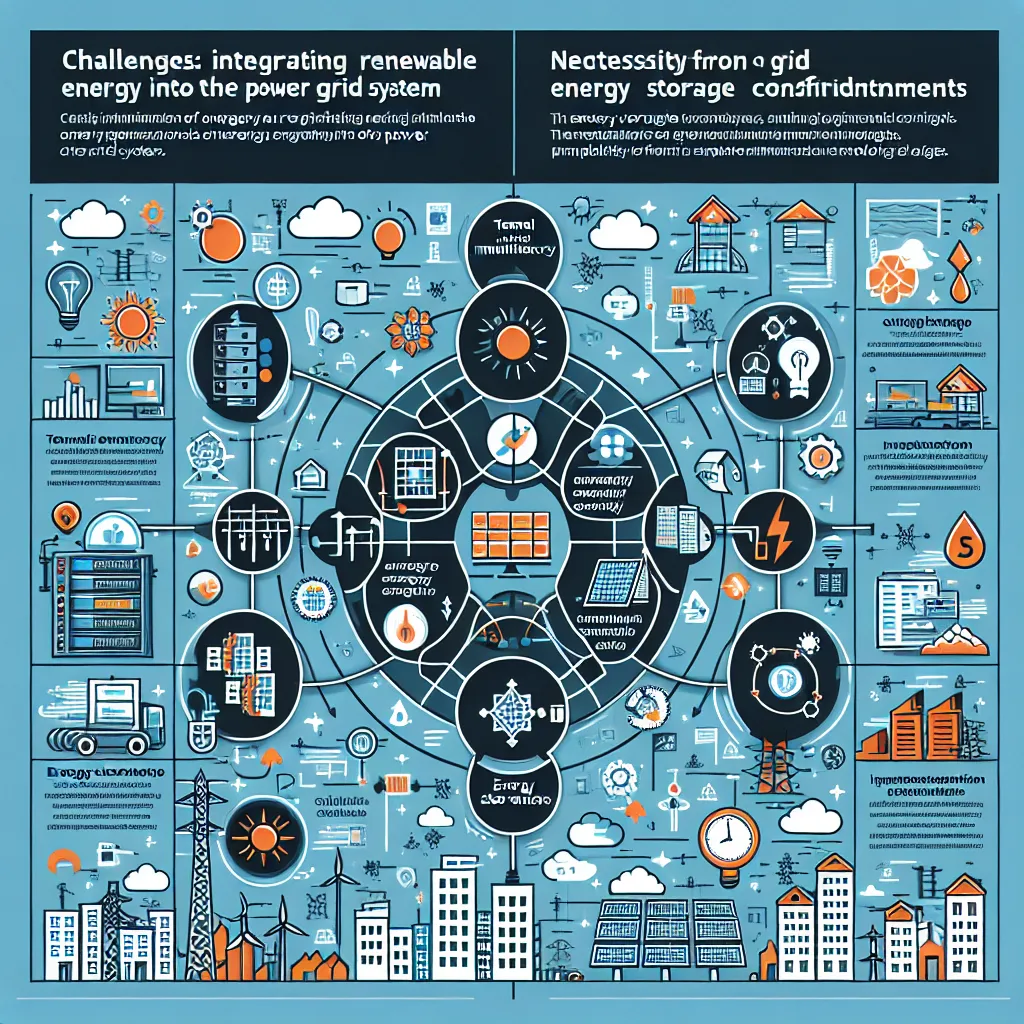The IELTS Reading section is a crucial component of the test, requiring candidates to demonstrate their ability to comprehend complex texts and extract relevant information. One topic that has gained significant attention in recent years is the integration of renewable energy sources into existing power systems. This subject has appeared in various forms in past IELTS exams and, given its ongoing relevance to global sustainability efforts, is likely to feature in future tests as well.
Based on our analysis of previous IELTS Reading passages, topics related to renewable energy and its challenges have shown a consistent presence, appearing in approximately 15% of environment-themed texts over the past five years. This trend suggests a high probability of encountering similar themes in upcoming exams, making it an essential area for IELTS candidates to focus on.
Let’s explore a sample IELTS Reading passage on the challenges of renewable energy integration, followed by practice questions and detailed explanations to help you prepare effectively for the test.
Sample IELTS Reading Passage: Challenges in Renewable Energy Integration
The Text
The global shift towards renewable energy sources is undeniable, with wind and solar power leading the charge in transforming the world’s energy landscape. However, the integration of these variable and distributed energy resources into existing power systems presents a complex set of challenges that must be overcome to ensure a stable and reliable electricity supply.
One of the primary obstacles in renewable energy integration is the intermittent nature of wind and solar power. Unlike conventional power plants that can generate electricity on demand, renewable sources are dependent on weather conditions, resulting in fluctuating power outputs. This variability can lead to grid instability and power quality issues, necessitating advanced forecasting techniques and sophisticated grid management systems to balance supply and demand effectively.
Energy storage emerges as a critical solution to the intermittency problem, allowing excess energy generated during peak production periods to be stored for use when renewable sources are less productive. However, the development and deployment of large-scale, cost-effective storage technologies remain significant hurdles. Current battery technologies, while improving rapidly, still face limitations in terms of capacity, lifespan, and environmental impact.
The existing grid infrastructure, designed primarily for centralized power generation and distribution, requires substantial upgrades to accommodate the decentralized nature of renewable energy sources. This involves not only physical modifications to transmission and distribution networks but also the implementation of smart grid technologies capable of managing bidirectional power flows and real-time data analysis for optimal system operation.
 Renewable Energy Integration Challenges
Renewable Energy Integration Challenges
Regulatory frameworks and market structures also play a crucial role in renewable energy integration. Many existing policies and market mechanisms were designed for conventional energy systems and may inadvertently create barriers to renewable energy adoption. Adapting these frameworks to incentivize renewable energy investment, promote grid flexibility, and ensure fair competition between different energy sources is essential for successful integration.
The transition to a renewable-dominated energy system also raises concerns about grid reliability and resilience. As the proportion of variable renewable energy in the power mix increases, maintaining system stability becomes more challenging. This necessitates the development of new grid codes, operational practices, and ancillary services to ensure the power system can withstand disturbances and recover quickly from outages.
Lastly, the integration of renewable energy sources has significant implications for the workforce in the energy sector. While the transition creates new job opportunities in renewable technologies, it also requires a shift in skills and knowledge. Ensuring a just transition for workers in conventional energy industries and developing training programs to build the necessary expertise for managing renewable-based power systems are critical social and economic challenges.
In conclusion, while the integration of renewable energy sources offers immense potential for reducing carbon emissions and enhancing energy security, it presents a multifaceted challenge that spans technical, economic, regulatory, and social domains. Addressing these challenges requires coordinated efforts from policymakers, industry stakeholders, and researchers to develop innovative solutions and create a flexible, resilient, and sustainable energy system for the future.
Questions
True/False/Not Given
Do the following statements agree with the information given in the reading passage? Write
TRUE if the statement agrees with the information
FALSE if the statement contradicts the information
NOT GIVEN if there is no information on this
- Renewable energy sources like wind and solar are consistently reliable in power generation.
- Energy storage is a potential solution to the intermittency of renewable energy sources.
- The current grid infrastructure is fully capable of handling renewable energy integration without modifications.
- Regulatory frameworks need to be adjusted to support renewable energy integration effectively.
- The transition to renewable energy will result in job losses across all sectors of the energy industry.
Multiple Choice
Choose the correct letter, A, B, C, or D.
-
What is described as one of the main challenges in integrating renewable energy sources?
A) High cost of renewable technologies
B) Lack of public support for renewable energy
C) Intermittent nature of wind and solar power
D) Shortage of suitable locations for renewable energy projects -
According to the passage, why is upgrading the existing grid infrastructure necessary?
A) To increase overall energy consumption
B) To accommodate decentralized power generation
C) To reduce the cost of electricity for consumers
D) To eliminate the need for conventional power plants
Matching Headings
Match the following headings to the correct paragraphs in the passage. Write the correct number i-viii next to questions 8-11.
i. Workforce transition and skill development
ii. The need for energy storage solutions
iii. Challenges in maintaining grid stability
iv. Adapting market and policy frameworks
v. The variability of renewable energy sources
vi. Environmental impact of renewable technologies
vii. Economic benefits of renewable energy
viii. Upgrading grid infrastructure for decentralized generation
- Paragraph 2: _____
- Paragraph 3: _____
- Paragraph 4: _____
- Paragraph 6: _____
Answer Key and Explanations
-
FALSE
Explanation: The passage states that renewable sources like wind and solar are “dependent on weather conditions, resulting in fluctuating power outputs,” which contradicts the idea of consistent reliability. -
TRUE
Explanation: The text directly mentions that “Energy storage emerges as a critical solution to the intermittency problem.” -
FALSE
Explanation: The passage clearly states that “The existing grid infrastructure… requires substantial upgrades to accommodate the decentralized nature of renewable energy sources.” -
TRUE
Explanation: The text indicates that “Adapting these frameworks to incentivize renewable energy investment, promote grid flexibility, and ensure fair competition between different energy sources is essential for successful integration.” -
NOT GIVEN
Explanation: While the passage mentions a shift in workforce skills and the creation of new job opportunities, it doesn’t state that there will be job losses across all sectors of the energy industry. -
C
Explanation: The passage identifies the “intermittent nature of wind and solar power” as one of the primary obstacles in renewable energy integration. -
B
Explanation: The text states that grid infrastructure upgrades are necessary “to accommodate the decentralized nature of renewable energy sources.” -
v
Explanation: Paragraph 2 discusses the intermittent nature of wind and solar power, which aligns with the heading “The variability of renewable energy sources.” -
ii
Explanation: Paragraph 3 focuses on energy storage as a solution to intermittency, matching the heading “The need for energy storage solutions.” -
viii
Explanation: Paragraph 4 discusses the need for upgrading grid infrastructure to handle decentralized generation, corresponding to the heading “Upgrading grid infrastructure for decentralized generation.” -
iii
Explanation: Paragraph 6 addresses concerns about maintaining grid reliability and stability as the proportion of renewable energy increases, aligning with the heading “Challenges in maintaining grid stability.”
Common Mistakes to Avoid
-
Misinterpreting the question types: Many test-takers struggle with distinguishing between True/False/Not Given questions. Remember, “Not Given” means the information is neither confirmed nor contradicted in the text.
-
Overlooking key words: In multiple-choice questions, pay close attention to qualifiers and specific terms used in both the question and the passage.
-
Relying on prior knowledge: Always base your answers on the information provided in the passage, not on your personal knowledge of the subject.
-
Time management: Spending too much time on difficult questions can lead to rushed answers later. Practice pacing yourself during preparation.
Key Vocabulary
- Intermittent: /ˌɪntəˈmɪtənt/ (adjective) – occurring at irregular intervals; not continuous or steady
- Integration: /ˌɪntɪˈɡreɪʃn/ (noun) – the act of combining or adding parts to make a unified whole
- Fluctuating: /ˈflʌktʃueɪtɪŋ/ (adjective) – rising and falling irregularly in number or amount
- Resilience: /rɪˈzɪliəns/ (noun) – the capacity to recover quickly from difficulties; toughness
- Decentralized: /diːˈsentrəlaɪzd/ (adjective) – distributed or delegated away from a central authority
Grammar Focus
Pay attention to the use of conditional sentences in discussing potential solutions and outcomes. For example:
“If renewable energy sources were perfectly reliable, integration challenges would be minimal.”
Structure: Second Conditional
Formula: If + Past Simple, Would + Base Verb
Use: To talk about hypothetical or unlikely situations in the present or future
Tips for Success in IELTS Reading
-
Improve your reading speed: Practice reading academic texts under timed conditions to enhance your efficiency.
-
Develop skimming and scanning techniques: These skills are crucial for quickly locating specific information in the passage.
-
Expand your vocabulary: Focus on academic and topic-specific vocabulary to improve your understanding of complex texts.
-
Practice active reading: Engage with the text by underlining key points and making mental notes as you read.
-
Familiarize yourself with various question types: Each question type requires a different approach, so practice all formats regularly.
-
Use contextual clues: When encountering unfamiliar words, try to deduce their meaning from the surrounding context.
-
Manage your time effectively: Allocate your time wisely across all sections of the Reading test to ensure you can attempt all questions.
By focusing on these strategies and regularly practicing with passages on diverse topics like renewable energy integration, you can significantly improve your performance in the IELTS Reading section. Remember, consistent practice and familiarity with the test format are key to achieving a high score.
For more insights on related topics, you might find our articles on the impacts of renewable energy on energy security and challenges in implementing smart grids helpful in broadening your understanding of energy-related issues often featured in IELTS Reading passages.


